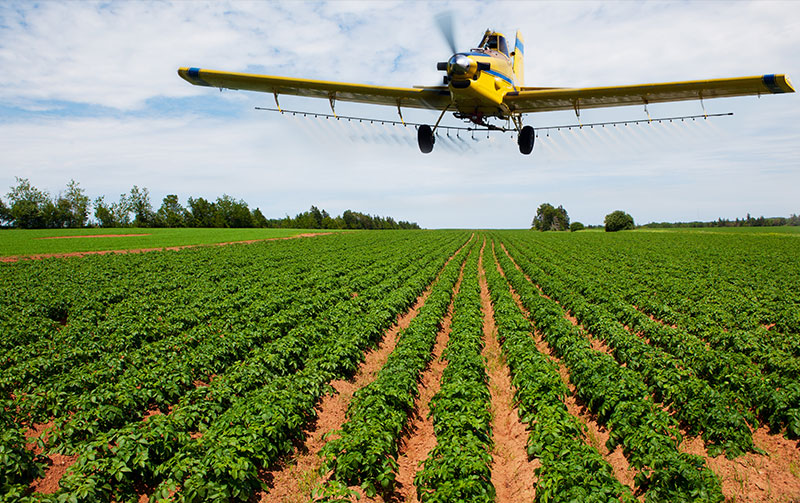

It’s Almost Spray Season!
Given that we’re about to hit full stride on spray season in the northern half of the US, I wanted to provide a quick reminder on how agricultural premiums are handled. To a certain degree, ag premiums follow different rules than all other lines of coverage. The premiums are often the highest rated of any line, and they follow a unique cancellation method referred to as the “short-rate scale.”
The reason for the higher premium is due in large part to two things:
1) Nature of the flight patterns — low-level flight is much riskier than most other types of flying. Things like power lines, tree tops, insufficient altitude to recover in emergency, etc., are all in play.
2) Chemical-related claims can be very severe. Often, several hundred to several thousand acres can be treated with the wrong chemical before any adverse effect is known. Additionally, it can take days, even weeks, for a chemical claim to manifest and show itself. Because of this, insurance carriers must charge an adequate premium for the risk they are taking on.
A third element that enters into the equation is seasonality, which is why premiums are cancelled on a short-rate basis versus a pro-rata basis. Short-rate cancellations return less premium than pro-rata cancellations. Think of it as a sliding scale based on the number of days you need the chemical coverage, with a certain percentage returned after 30 days, 60 days, and so on. If the returns were pro rata, the carrier would never make enough money to pay claims, because the majority of operators would only be paying for 6–8 weeks of coverage (spray season in the northern United States).
There are some positive factors to consider as well. Operators can reduce their premiums by sending their pilots to certified safety programs like PAASS (Professional Aerial Applicators Support System) and Operation Safe. Also, keep in mind that there are several coverage options when it comes to chemical liability. It is imperative that you relay a detailed summary of all spraying activity prior to flying so that you know the operation is covered.
